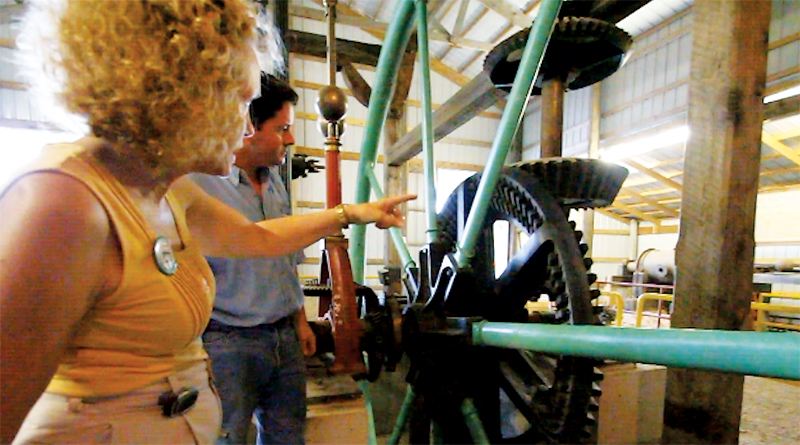Steam Powered Engines ~ The History of Ordinary Things

For many of us, summer means outings to the state fair and steam engine shows. But what do we know about the story and significance of steam power? For much of history, the only way people traveled was by foot or horse. There were no powered trains, boats, or vehicles. This made travel slow and difficult.
In 1698, Thomas Savery, a British engineer, invented the first primitive steam engine to generate power. It was used to pump water out of mines. Because of the limited machining and materials of the time, his engine did not work effectively. There had to be revolutionary improvements in the smelting of iron.
In 1748, John “Iron Man” Wilkinson, an English industrialist, pioneered the manufacture of cast iron. Made by adding alloys to native iron, the cast iron was a cheaper and less brittle material than wrought iron. Cast iron became an important structural metal essential to the advances of the Industrial Revolution.
In the early 1700s, Thomas Newcomen invented an atmospheric-pressure piston engine. The irregularity of the piston in the cylinder casing allowed the steam to escape rather than build up force needed to create power.
In 1764, James Watt, a Scottish engineer (1736-1819), performed a series of trials on a Newcomen engine looking for ways to seal the piston in the cylinder. He created a design that was workable, but the boring methods of the time were too inaccurate to achieve smooth movement of the piston. This problem plagued Watt for over a decade.
In 1775, John Wilkinson (see above) built a machine that could bore engine cylinders and cannon barrels with unequaled accuracy. His machine could bore the cylinders needed for Watt’s design. The tight fit of the piston in the cylinder allowed the steam to build up the pressure needed to generate power. This change used half as much coal to produce the same amount of power.
In 1782, Watt patented the “double-acting” engine using steam to push the piston both up and down, for the push and pull action. A few years later, he added a centrifugal governor for automatic control of the speed of the engine. In 1790, the addition of a pressure gauge, completed the Watt engine.
Watt’s steam engine was initially used to operate rotary machines in factories such as textile mills. It was quickly adopted across multiple industries. By the early 1800s, high-pressure steam engines had become small enough to move beyond the factory. They found their way into boats, rail engines, steam tractors, and road vehicles. The first steam-powered locomotive was introduced in Britain in 1804. The United States put a passenger steamship on the water in 1807.
The Watt steam engine became the prime mover of the Industrial Revolution (1760-1820). Steam power allowed society to move from primarily an agricultural and handicraft economy to one dominated by industry and machine manufacturing. Large-scale industry, mechanized manufacturing and the factory system changed people’s lives and lifestyles were forever.
This author has stood by a full-scale model of the Wilkinson boring mill and a Watt steam engine built in the late 1790s. The engine powered textile mills in England from 1827-1948. It was dismantled and shipped to the DoAll Company in Des Plaines, Illinois, in the 1950’s. In early 2000s, it was obtained by the Cedar Valley Engine Club, Charles City, Iowa. Club members dismantled the 40-ton steam engine and put it back together on their grounds in Floyd County. Today, the engine with its 16-foot flywheel, is powered by electricity with several gear reduction units. One of only 3 in America, it is demonstrated at their Engine Club Show each Labor Day weekend.
Doris is a collector, a storyteller and a free-lance curator whose passion is unlocking the stories in collections from family or private individuals. She develops and installs exhibits in small museums, libraries, and public spaces. This work has evolved to One Woman Shows narrating the exhibits. Additionally, she researches and distills the history of antiques and random items. These comprise her column intended to educate and entertain readers. Contact or follow her on Facebook, www.facebook.com/HistoryofOrdinaryThings
- Rain & Shine, A Millennia Of Innovation: The History of Ordinary Things - July 19, 2024
- Crayons Through The Ages ~ The History of Ordinary Things - June 21, 2024
- The Rocking Chair Revolution ~ The History of Ordinary Things - May 24, 2024


